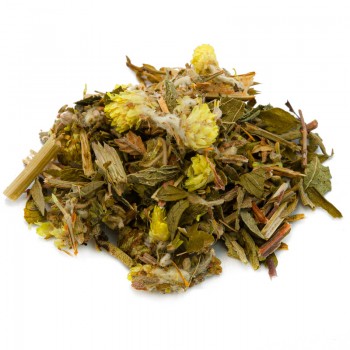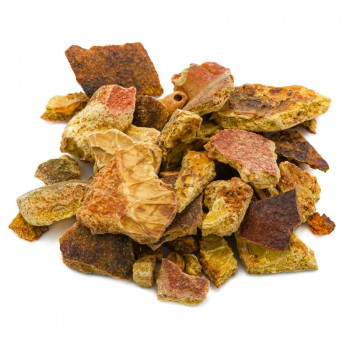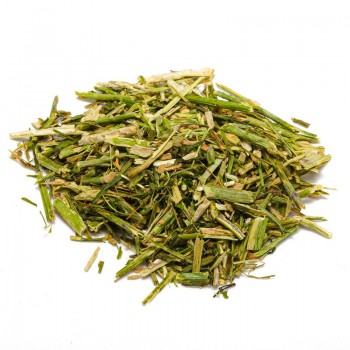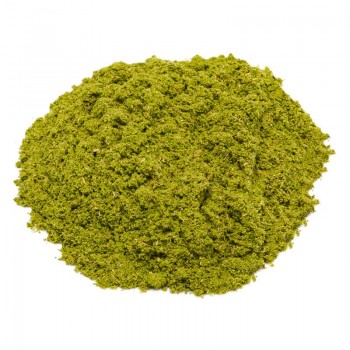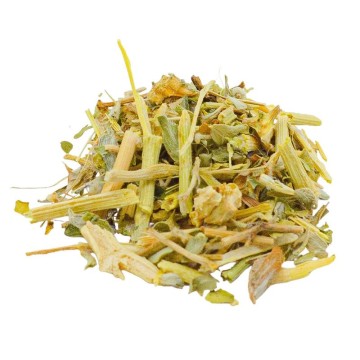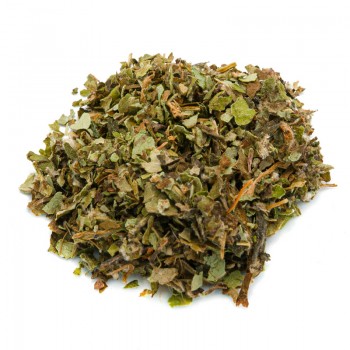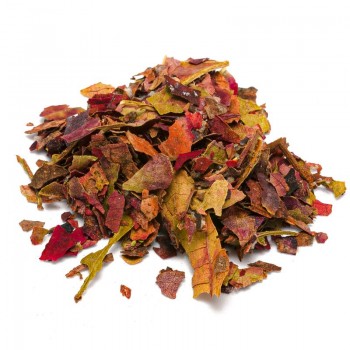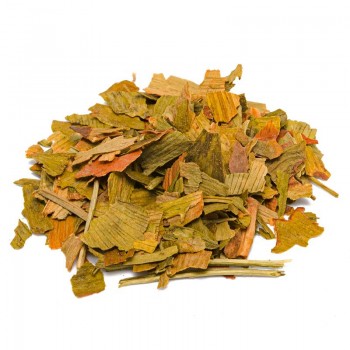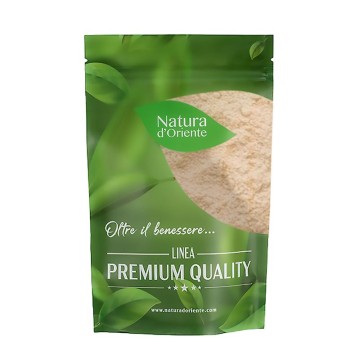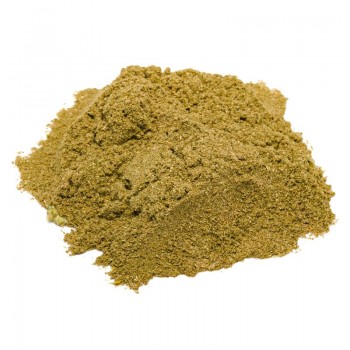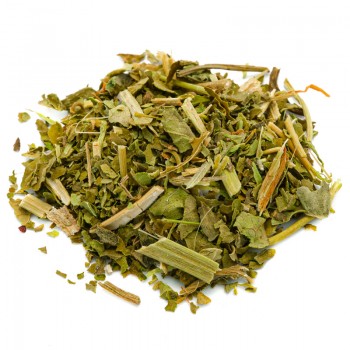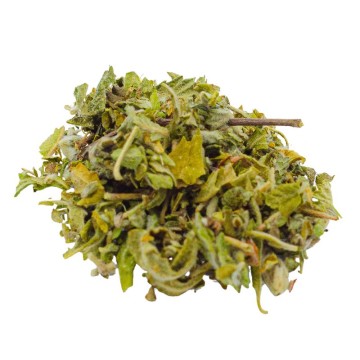This plant has for centuries been considered a traditional remedy for leg vein health . The horse chestnut gives its bark, for an infusion that tones and protects the blood vessels . It can be useful when you suffer from edema, such as that of the ankle linked to poor venous return.
Horse chestnut bark: properties and benefits
The plant in its bark in herbal tea cut, is taken in small doses, for support in the case of venous disorders. It can be useful to counteract the symptoms of hardening of the arteries, varicose veins, phlebitis, leg ulcers, venous stasis, hemorrhoids.
Historically used as an anti-inflammatory agent, as well as being used for vascular problems, we know that it helps tone the walls of the veins.
These walls, if loose or distended, can become varicose, hemorrhoids and create circulatory problems.
Weak veins or under chronic stress, in fact, are more likely to fail, causing liquids to escape from the vessels into the tissue space. A phenomenon that leads to swelling, edema.
Accumulation of fluid is more common in the legs, in those who stand for long periods of time or who are overweight.
Horse chestnut contains beneficial substances for the venous system, in particular a complex of saponins (aphrodescin, argyrescin, aescin, cryptoescin). In particular, escin has been studied for its action on the tone of the venous walls.
An action that improves circulation, and promotes the return of blood to the heart.
Horse chestnut is also rich in flavonoids (quercetin and kaempferol), which also give them protective effects on blood vessels.
The substances contained in horse chestnut therefore perform an antioxidant function and have a vaso-protective role. Aescin protects collagen and elastin, the two main proteins that form the structure of the veins, essential for the well-being of blood vessels
By protecting these proteins, veins and capillaries can better maintain their structural integrity when exposed to stress.
The horse chestnut bark also plays a draining role, useful for reducing fluid retention .
In this way, it helps the permeability of the capillaries and allows the reabsorption of excess fluids in the circulatory system. It counteracts lymphedema, which is the accumulation of fluids in soft tissues, caused by obstructions in the lymphatic system.
The sensations of tiredness and heaviness in the legs, pain and swelling in the legs can be relieved. By improving microcirculation, it is also useful for combating cellulite.
The herbal tea contains various antioxidants , which provide valuable anti-aging benefits.
In addition, for centuries horse chestnut has also been transformed into a lotion, for external application for the treatment of ulcers and eczema.
Origins and History of cultivation
The horse chestnut is a tree that today we consider to be shade and ornamental, but it has also been used since ancient times for its properties.
It is native to south-eastern Europe, in particular it seems to derive from the forests of the Pindus mountains and the Balkan peninsula. According to some scholars, it was also present in Persia, and in southern India.
Over time, it spread throughout Europe, and was introduced in North America. It has taken on many names, and is also known as Indian Chestnut. The botanical name Aesculus comes from the word bait, which means food, and was given by ancient peoples to a certain species of oak. For reasons of similarity, perhaps, the name has been transferred to horse chestnut.
His link with horses, perhaps was given by the fact that in ancient times it was thought that the tree was able to heal horses and cattle from respiratory diseases. Another possibility can be given by the small horseshoe-like marks on the branches. These signs are the scars of the areas where the leaves previously grew.
It has been used as a fodder for feeding farm animals, although some native peoples americans included horse chestnut nuts in their diet; knowing that the walnut coating is toxic, and the walnut should be boiled.
The wood is too soft for furniture construction or joinery, so it was used to build crates and packaging.
In phytotherapy, the parts used are the bark and the seeds.
To date there are 15 recognized species of horse chestnut, and in Italy it is widespread everywhere as an ornamental and shady tree, especially in the center-north.
Plant and flowers
The Aesculus hippocastanum plant is a member of the Hippocastanaceae family.
The horse chestnut belongs to a botanical family other than the sweet chestnut, Castanea vesca.
Horse chestnuts grow well on almost all terrains, so they are often planted in cities; in any case, they seem to prefer a sandy soil.
They grow very quickly and can reach heights of around 30 meters.
The branches of the horse chestnut are broad, and the bark is gray-green or gray-brown on the outside - the inside of the bark is pink-brown, with fine lines that run its length. It is odorless, and its taste is bitter and astringent on the palate. Large leaves and flower buds are visible even during the winter months, but are encased in a resinous coating, which protects against frost or humidity. The leaves are dark green, and the flowers sprout in clusters: they are white flowers with a pale scarlet or yellow tinge.
The horse chestnut fruit is a dark brown walnut, with a smooth surface and about 5 cm in diameter. Nuts contain carbohydrates, which are generally indigestible if not boiled.
Nutritional values of the horse chestnut bark
There are many antioxidant substances contained in the horse chestnut bark.
We find polyphenols, coumarins, tannins, saponins (such as aescin), and also beneficial substances such as allantoin, and plant sterols .
How to use the ingredients in horse chestnut tea
The ideal infusion is reached by inserting approximately 3-5 grams of horse chestnut bark into a cup (250 ml) with water at 100 ° C.
Leave to infuse for 5 to 8 minutes, before drinking the herbal tea.
Horse chestnut: side effects and contraindications
This herbal tea can have rare side effects, especially for those suffering from kidney disease; the aescin contained in horse chestnut, in the long term could interfere with the capillaries of the kidneys (glomerulus). Side effects include nausea, dizziness, headache, stomach pain.
Horse chestnut is not recommended for those who follow anti-coagulant therapy, since the coumarins contained in the bark have an antithrombotic effect.
It is useful to ask for a prior medical opinion.
Horse chestnut is not recommended for pregnant or breastfeeding women.











 No reward points for this product.
No reward points for this product.
